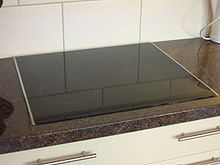Induction cooker advantage
Induction cooking heats a cooking vessel with induction heating, instead of heat transfer from electrical coils or a gas flame as with a traditional cooking stove. For nearly all models of induction cooktop, a cooking vessel must be made of a ferromagnetic metal such as cast iron or stainless steel. Copper, glass and aluminum vessels can be placed on an interface disk which enables these materials to be used.
In an induction cooker, a coil of copper wire is placed underneath the cooking pot. An alternating electric current flows through the coil, which produces an oscillating magnetic field. This field induces an electric current in the pot. Current flowing in the metal pot produces resistive heating which heats the food. While the current is large, it is produced by a low voltage.
An induction cooker is faster and more energy-efficient than a traditional electric cooking surface. It allows instant control of cooking power similar to gas burners. Other cooking methods use flames or red-hot heating elements; induction heating heats only the pot. Because the surface of the cook top is heated only by contact with the vessel, the possibility of burn injury is significantly less than with other methods. The induction effect does not directly heat the air around the vessel, resulting in further energy efficiencies. Cooling air is blown through the electronics but emerges only a little warmer than ambient temperature.
The magnetic properties of a steel vessel concentrate the induced current in a thin layer near its surface, which makes the heating effect stronger. In non-magnetic materials like aluminum, the magnetic field penetrates too far, and the induced current encounters little resistance in the metal.[1] At least one high-frequency "all metal" cooker is available, that works with lower efficiency on non-magnetic metal cookware.
- Pre:Working principle of Induction cooker and its structure 2014/5/28
- Next:Machines for the electric motor 2012/5/21


